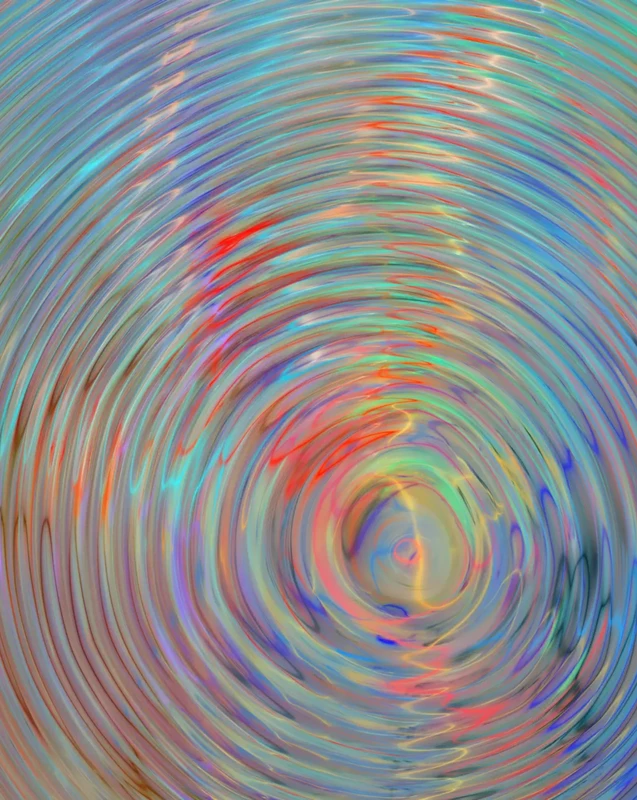Zachary Lieberman: Circles, Blobs, and Ripples
6 Feb-10 Mar 2024


“My life is squares, triangles, lines.”
– Vera Molnár
Circles, Blobs, Ripples, Zach Lieberman’s first solo show with Unit, explores the unexpected effects of geometries crafted with code. Situating his work within a tradition initiated in the 1950s, the exhibition reveals how a systematic approach to image-making can transform simple shapes into mesmerising visual experiences. Whether bended, blended or extruded, the circle motif can be found in varying degrees within the works on display; sometimes it is a symmetrical shape, other times it is pushed and pulled as biomorphic blobs or dissipated into ripple-like patterns. By focusing on still images, in the form of large and smaller scale prints, alongside a selection of screen-based works, viewers are encouraged to examine the subtle variations in circular forms within and between each composition, offering a meditative approach to the artist’s dynamic digital practice.
For Lieberman, creative coding is akin to poetry. Much like poetry, coding is a language where even the slightest re-arrangement of words – or, in this case, numbers – can have a transformative impact on its meaning. Through a daily practice of digital sketches, the artist experiments with modifying code, often introducing elements of randomness, to reveal something new within basic geometry. Constantly tweaking and probing, he engages in conversation with the machine, seeing what happens when a small amount of chaos is injected into the system. At its core, his practice seeks to showcase the poetic, transformative potential in numbers, describing himself as a “photographer of maths”. When a strange, unique, perception-bending experience emerges from the system, Lieberman aims to capture it.
This delicate dance between symmetry and asymmetry, systematic order and random disorder, aligns the artistic philosophy of Lieberman with that of computer-art pioneer Vera Molnár. In the 1950s, before she had access to a computer, Molnár envisioned the Machine Imaginaire – a systematic method for abstract drawing that enabled her to merge mathematical precision with the messy imperfection of hand-drawn elements. From the late 1960s, she began writing software to control a plotter, a machine that moves a pen along an axis. Whether drawn by hand or by plotter, her underlying philosophy remained the same: harness the interplay between order and randomness to reveal the aesthetic potential of science and mathematics.
Just as Molnár famously applied algorithms to explore variations on simple shapes – namely squares, triangles, lines – Lieberman uses them to explore circles, blobs and ripples. In works such as Center Point Circle Study, the circle is presented in its most recognisable form as a perfect and symmetrical shape but, by interpolating properties of colour and light, Lieberman plays upon perception to mesmerising effect. In other works, mathematical precision gives way to organic imperfection, as with the Soft Circle Studies where concentric shapes blur together through gradients of complementary colours. Lieberman’s blob works, on the other hand, stand out with their minimalistic lines and metallic sheen. Whether suspended in time or dramatically slicing through space, these undulating forms evoke the restless nature of life itself. And finally, returning to colour in his ripple studies, the artist explores the chaotic beauty of converging lines, emulating the refraction of light within water.
Focusing on the motifs that have come to define Lieberman’s singular style – the circle, the blob and, most recently, the ripple – the exhibition is testament to the artist’s mastery over mathematical systems. Simultaneously surprising and serene, this new body of work not only reveals the unexpected beauty within numbers, but ultimately creates moments of quiet reflection and contemplation. As the artist says: “artwork has the potential to plant seeds in people’s minds. If anything, I’d like to do that.”